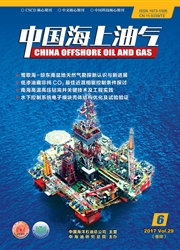

 中文摘要:
中文摘要:
中国近海海域烃源岩和油气分布具有明显的分带性。烃源岩的分带性表现为"内带腐泥,外带腐殖":内带主要为腐泥型的中—深湖相烃源岩,有机质主要来源于水生低等生物,陆生高等植物的贡献很少;外带烃源岩类型较复杂,有海陆过渡相煤系烃源岩、海相烃源岩和湖相烃源岩,以前二者为主,有机质主要来源于陆生高等植物,以腐殖型烃源岩为主。油气的分带性表现为"内油外气":腐泥型烃源岩具有倾油性,因而内带以油为主,天然气主要为油伴生气;腐殖型烃源岩具有倾气性,因而外带以天然气为主,天然气主要为煤型气和凝析油伴生气,部分盆地或凹陷存在数量有限的原油。南海北部深水区处于外带,是天然气勘探的重要领域。
 英文摘要:
英文摘要:
There are clear zonations in distribution of source rocks and hydrocarbon offshore China.For the source rocks,this zonation is characterized by inner sapropel and outer humics.The inner zone is predominated by the sapropel type of source rocks deposited in middle-deep lakes,with its organic matter mainly from aquatic organisms and rarely from terrestrial higher plants.The outer zone contains several types of source rocks,such as transitional facies of coal measures,marine facies and lacustrine facies,but the first two types comprise most of the source rocks and their organic matter is mainly humic type from terrestrial higher plants.The zonation in hydrocarbon distribution is characterized by "inner oil and outer gas",because the sapropel type of source rocks is oil-prone in the inner zone,and the humic type of source rocks is gas-prone in the outer zone.The gas accumulations are predominated by coal-related gas and associated gas with condensate,and limited oil may exist in some basins and depressions.As a part of the outer zone,the deep-water region in the northern South China Sea is an important area for gas exploration.
 同期刊论文项目
同期刊论文项目
 同项目期刊论文
同项目期刊论文
 期刊信息
期刊信息
